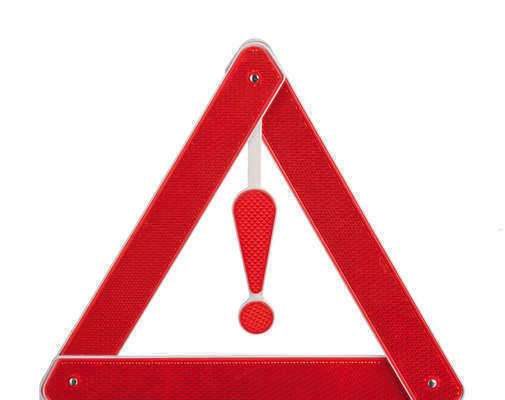
Money is the one constant of all financial transactions, as it changes hands quickly and readily to accommodate any deals. In order for such transfers to function, the Government needed a special form of contract enforced by the power of law. This special type of contract is called a negotiable instrument and it facilitates the payment of money.
There are many different types of negotiable instruments, each of which bears some variation in their exact qualities, but there are some aspects of negotiable instruments which must be borne by all contracts that fall under the overall title.
Most people know and deal with negotiable instruments in the form of checks which are, in essence, contracts for the transfer of money. But businesses often deal with different negotiable instruments, each of which bears an important role in the overall workings of the economy.
Types of Negotiable Instruments
The Uniform Commercial Code provides for a number of different types of negotiable instruments. For any given negotiable instrument to be classified as one of these types, there are specific qualities which it must bear, though in the end the types of negotiable instruments defined in the Uniform Commercial Code are fairly wide-ranging and flexible in form. These types include promissory notes and drafts as the two primary forms of negotiable instrument, with checks defined as a specific form of draft broken up even further into yet more specific types of checks.
The key difference between the two main types of negotiable instruments is that a draft is a command to pay, while a promissory note is a promise to pay. A draft is issued by one party, the drawer, ordering another party, the drawee, to pay a third party, the payee. A promissory note, on the other hand, involves one party promising to pay another party a specific amount of money at a specific point in time.
Understanding the difference between these two types of negotiable instruments is important for understanding the two main purposes for which negotiable instruments are used. Promissory notes, for instance, are used often for loans, while specialized forms of drafts are used for all kinds of business deals.
Checks and Drafts
Drafts are those types of negotiable instrument which involve three parties, with one party ordering a second to pay the third a certain amount of money. But drafts can be split up into multiple different forms as well, with checks, trade acceptances, and time and sight drafts all being important types of drafts.
Checks, for example, are drafts in which one of the parties involved are specifically defined. The drawee, the party of the draft which pays the third party on the order of the first, is always a bank for a check; this is the defining characteristic of a check. A check is actually a form of sight draft, where sight drafts are those drafts which require only the presentation of the physical document of the draft in order to require the drawee to pay.
Sight drafts like checks are most often used as drafts for the exchange of money between two individuals with some intermediary party providing the funds, as sight drafts inherently bear the danger of another party gaining the physical draft and using it.
Time drafts, on the other hand, are drafts which allow only for a transfer of funds at a certain specific time. Time drafts are used to protect one or both of the parties involved, as time drafts, for example, would allow a buyer to delay payment until the goods he or she is buying actually arrive, thereby ensuring that the buyer would not lose money on the deal by interacting with an untrustworthy seller.
Trade acceptances refer to a type of time drafts in some contexts, and to a specific, important element of drafts in other contexts. Acceptances occur when the seller, or the payee, would present the draft to the drawee, the bank or the financial institution which is providing the money, in order to gain the drawee’s acceptance of the draft and surety of payment.
Promissory Notes
Whereas drafts are a form of negotiable instrument which involve three parties and an order to pay, promissory notes involve only two parties and are promises instead of orders. What this means is that promissory notes have significantly more to do with agreeing to pay off debts than they have to do with paying for a transaction.
Promissory notes are differentiated from less official IOUs for the simple fact that promissory notes involve official promises of monetary payment for the debt, including a specific time frame for such payment. IOUs are merely acknowledgments of debt, while promissory notes are substantiated agreements to pay back a specific sum.
Promissory notes are often used with regard to some kind of loan, as they can contain all necessary information, including the time frame of payment and the interest rate. For example, promissory notes are used most in real estate transactions, when an individual must take out some kind of mortgage in order to pay for a new home. Technically, all forms of paper currency are also forms of promissory notes.
Requirements of an Negotiable Instrument
Negotiable instruments need to bear certain elements in order to be treated under law and the Uniform Commercial Code as negotiable instruments. First, the writing form required for negotiable instruments to be considered as such must have many important stipulations.
For example, in order for a contract to be a negotiable instrument, the transfer of money must be unconditional. This means that the transfer of payment in a negotiable instrument must not be made conditional on the quality of the goods, for instance. The payer cannot refuse payment to the payee, though the payer can delay payment to the payee until certain conditions are met.
Another example includes the fact that all negotiable instruments must have a clear and specific monetary amount involved. Though the negotiable instrument can have certain variables involved in the amount of money being exchanged, there must be a clear formula for determining that amount at any given time; this is how loans can function as negotiable instruments.
Secondly, negotiable instruments have certain rules which must be obeyed regarding signatures. Signatures from involved parties must be included on the negotiable instruments, and new parties can be introduced to the negotiable instrument through the addition of further signatures. Finally, negotiable instruments must be either promises to pay or orders to pay, with each of those two types having its own specific qualities.
Factors Not Affecting Negotiability
Though there are many factors that would affect the negotiability of a given instrument, there are some factors that would appear significant which, as provided for under the Uniform Commercial Code, are actually insignificant and do not affect the negotiability of the instruments in question. Such factors include the date of the negotiable instrument. Some might believe that incorrectly dating a negotiable instrument would invalidate that instrument leaving it no longer negotiable.
But this is actually untrue, as the date of a negotiable instrument only matters for some forms of negotiable instrument. If, for example, the negotiable instrument involved interest or was made payable only on a certain date, then the date would be significant to the negotiability of that instrument, but in general, incorrectly dating a negotiable instrument likely will have no effect on its negotiability.
There are several other such factors that might originally be seen as affecting the negotiability of the instrument in question, but which actually bear no significance to the instrument’s negotiability. Failing to define every term on a negotiable instrument, for example, might not matter if there are default values which can be used. Similarly, making some forms of alteration to the negotiable instrument will not affect the negotiability of the instrument so long as no alterations of a fraudulent nature are committed.
Negotiating Order and Bearer Instruments
One of the primary distinctions to be made for any given negotiable instrument concerns whether it is an order instrument or a bearer instrument. Each type is negotiated in its own fashion. Negotiation, in this sense, means transference. A negotiable instrument is negotiable insofar as it is transferable to another party. Thus, when a negotiable instrument is negotiated, then it is transferred to another party. To negotiate an order instrument, then, would require a different set of actions than would be required to negotiate a bearer instrument.
An order instrument is a negotiable instrument which is made payable to the order of a specifically designated party, while a bearer instrument is an instrument payable only to the holder of that instrument. For a bearer instrument, all that is required for negotiation is for the bearer to physically transfer the instrument to a new party. But for an order instrument, the instrument must be endorsed over to a new party.
There are many different types of endorsements which can be used to negotiate an instrument to a new holder, each of which adds different caveats or restrictions to the transference. It is even possible to transform an order instrument into a bearer instrument through certain types of endorsements, and thereby, facilitate negotiation in that manner. The opposite is also possible, as bearer instruments may be altered into order instruments, which would then have to be negotiated through endorsement.
Endorsements
An endorsement is when a given party attached itself to a negotiable instrument. Endorsements can come from parties who are adding support to a negotiable instrument, but endorsements primarily come from the party to whom the negotiable instrument is currently payable. Such endorsements are generally made to validate the negotiable instrument and make it payable or to transfer ownership of the instrument to a new party.
There are many different kinds of endorsements which can be used to negotiate an order instrument over to a new holder. Each type of endorsement has a different purpose and will often restrict the ways in which the negotiable instrument will be usable following the endorsement. A blank endorsement, for example, is the most basic form of endorsement, involving only a signature on the back of a normally payable order instrument. This basic signature of the payable party would, without any further instructions, transform the instrument into a bearer instrument, thus making it payable to whomsoever held the physical instrument.
A special endorsement, on the other hand, would keep the negotiable instrument as an order instrument and would instead make it payable only to the single specific party mentioned in the special endorsement. Such an endorsement would still include the signature of the payable party, but it would also include a clause of “pay to the order of…” ensuring that the negotiable instrument would now be payable to a specific party, instead of becoming a bearer instrument.
Other types of endorsements include qualified endorsements, designed to protect the endorser from liability to the negotiable instrument, and restrictive endorsements, which generally include some form of basic instruction along with the endorsement to ensure that the negotiable instrument is used only in one particular fashion.
There are also many issues that might arise surrounding endorsements and exactly how to interpret them. For instance, an endorsement might make a negotiable instrument payable to both John and Matt. In such a case, it becomes unclear whether both signatures are necessary for the instrument to be payable.
Holder
The holder of a given negotiable instrument is the party with the right to enforce that instrument and seek payment based on its terms. This party must also be in possession of the negotiable instrument. Exactly what party qualifies as the holder can vary greatly, depending upon the type of instrument in question and any special conditions that may apply to it.
For bearer instruments, for instance, the holder is only whoever physically possesses the negotiable instrument at any given time. For order instruments, on the other hand, the instrument must be made out as payable to the person in possession of the instrument for that person to be considered the holder. Sometimes holders can actually have their status as holders effectively removed from the chain of holders through endorsements designed to protect them from liability.
Putting aside these nuanced issues, however, there are some overarching distinctions regarding holders and exactly what liability they fall under with regard to the negotiable instrument in question. A holder in due course, for instance, would have immunity from any defenses mounted by the issuer or maker of the negotiable instrument from paying that negotiable instrument. Put another way, a holder in due course must be paid for the instrument, unless there are some clearly exceptional circumstances which allow the issuer to mount a universal defense.
An ordinary holder, on the other hand would have no such protections and would be subject to most defenses that an issuer could make. Thanks to the shelter principle, those parties who come to hold the negotiable instrument after the holder in due course would actually gain the same kinds of protections that the holder in due course might have, and therefore, would be similarly protected from defenses against payment.
Liability
Parties can be made liable with regard to a negotiable instrument in two primary ways. The first way is for the party in question to add a signature to the negotiable instrument. This would result in what is called signature liability and generally would give the signer at least secondary liability, if not primary liability. The party bearing primary liability is the party that must pay the negotiable instrument when payment is sought. The party or parties with secondary liability only need to pay if the party with primary liability defaults in some fashion.
The second way for a party to become liable with regard to a negotiable instrument is for that party to take some action with the negotiable instrument. There are only two actions which induce this kind of liability, called warranty liability. If a party transfers a negotiable instrument, or if a party presents a negotiable instrument for payment, then that party makes certain warranties regarding the negotiable instrument and is liable for any breaches of those warranties that may crop up.
These two main types of liability, signature liability and warranty liability, can overlap as the party that has attached a signature to a negotiable instrument might be doing so with specific intent to endorse it over to another party, thus granting the signer both signature liability and transfer warranty liability. Each type of liability only applies in certain situations. For example, as mentioned earlier, secondarily liable parties will only have their liability called in if the primarily liable party fails to make a payment on the negotiable instrument, whereas transfer warranty liability might come into play if the transferor attempts to transfer a negotiable instrument which has been significantly altered.
Defenses
The maker, issuer, or drawer of a negotiable instrument has several different types of defenses available to him, her, or it, in order to avoid payment on that negotiable instrument, assuming that there is a legitimate reason. These defenses, for instance, would not help to protect a party that had drawn a check it did not have the funds to support, but they would help to protect a party from needing to pay a debt on a promissory note while that party is going through bankruptcy proceedings.
These defenses come in two overarching forms. Universal defenses are those defenses which protect the defender from needing to make payment to any holder, even a holder in due course. Normally, a holder in due course would be immune from the defenses of a maker, but universal defenses are generally designed to protect the maker, issuer, or drawer from inarguable wrongdoing, and as such, will protect him or her even from holders in due course. There are a few exceptions within universal defenses, however, as some universal defenses might not protect the defending party entirely.
Personal defenses, the second main type of defense, will never protect the defending party from claims made by a holder in due course. Personal defenses will generally only protect the defending party from claims made by an ordinary holder. Such defenses are generally based around less severe wrongdoing than that of universal defenses.
Discharges
When all debt or obligation is discharged from a negotiable instrument, then that instrument effectively becomes empty of power and is useful only for records. The ways to discharge all obligations in this fashion are relatively few and generally occur only in the course of standard procedure for a negotiable instrument.
The primary method of discharging the debt from a negotiable instrument is for the primarily liable party to pay off the instrument to the current holder. Doing so is referred to as tendering payment, and because the negotiable instrument will represent a monetary debt, paying off that monetary debt by tendering payment will discharge the obligation from the negotiable instrument.
The other way of discharging obligation is the cancellation of the negotiable instrument. Whereas tender of payment comes from the primarily liable party, cancellation can only be performed by the current holder of the instrument. Cancellation must be an intentional act on the part of the holder and cannot occur accidentally or through a mistake, though the exact form of cancellation could be anything from destruction of the negotiable instrument itself to simply altering it by writing “paid” across its face.
Cancellation might also involve crossing off specific signatures from the negotiable instrument, thereby eliminating those parties’ obligation to the instrument, while potentially keeping the obligation of others.
Checks
As mentioned above, checks are a particular form of draft, in which one of the three parties is always involved in a draft: the drawee is a bank. Checks are a fairly versatile form of payment, but over time certain problems arose concerning checks. The drawing of a check, for example, is not enough to genuinely guarantee payment, as a check could be drawn on an account that does not have enough money in it to support the payment of the check.
In order to fill in the specialized niches that arose out of a desire for certain other forms of draft payment, new types of check were developed, each of which has certain unique features suiting it for its own purpose. A cashier’s check, for example, solved the guarantee issue of most checks by being a check drawn from the bank itself as opposed to any individual account.
A certified check performs a similar function in that it requires certification from a bank that the account from which the check is drawn has enough funds to support the payment of the check. Traveler’s checks are yet another specialized form of check, designed to protect the check’s holder while still offering a stronger guarantee to the payee.
Each of these checks has its own particular traits which are important to know when using them, especially with regard to the worst case scenarios in which a check is lost or stolen.
Banks and Customers
The relationship between banks and their customers is critical for the functioning of the modern day economic system and for many forms of negotiable instruments. Checks rely on banks to successfully and honestly fulfill their duties as the drawees of those checks, issuing payment to the payees to whom the check is presented for payment. Promissory notes often involve banks acting as the creditor for a loan, offering money to the debtor in exchange for later collecting on that debt with interest.
The problem arises, however, in that these two roles which banks commonly fill seem to be clearly at odds with each other. In the one role, banks are acting as agents in favor of their customers, performing services for their customers upon authority granted by those customers. Should a bank in such a role perform an act detrimental to a customer, then the bank would not be acting as an agent and would lose all authority to act.
On the other hand, however, banks that act as creditors with regard to debts and promissory notes fill an entirely different role, as they are no longer acting in the favor of customers. Banks as creditors have the return of the debt as a primary concern and will often act in a fashion which, while acceptable practice for a creditor, is quite clearly detrimental for the debtor.
The reconciliation of these two roles, one in which a bank acts as an agent working in the favor of the customer, the other in which the bank acts as a creditor acting to the customer’s (debtor’s) detriment, is complex, to say the least.
























